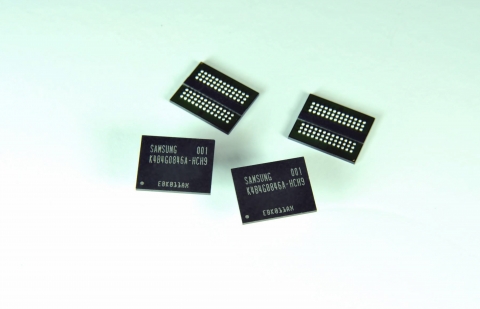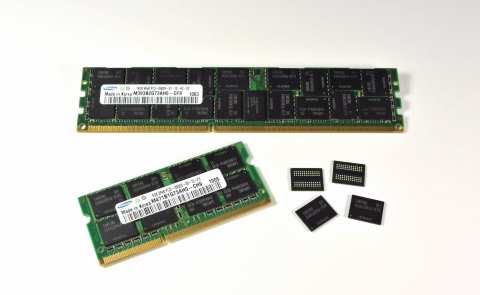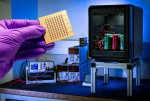Samsung Expands Green Line-up with Industry’s First Volume 40nm-class 4Gigabit DDR3
“When our 40nm-class DDR3 was first introduced last July, we were well ahead of the curve for high density, high performance DDR3,” said Dong-Soo Jun, executive vice president, memory marketing, Samsung Electronics. “Now, in just seven more months, we have introduced an ultra-low power ‘Green Memory’ – the 4Gb DDR3, which is double the density of its predecessor. At a module density of 16-gigabyte (GB), the 4Gb based module can save 35 percent in power consumption, to support customer requirements for more energy-efficient designs.”
Samsung’s 40nm-class Green DDR3 is optimized to enhance energy-efficiency ratings for servers seeking to comply with or exceed new Energy Star power consumption specifications.
Production of the 4Gb DDR3 raises the amount of memory for use in servers to 32Gigabytes (GB) per module, which is twice the maximum density achieved with modules based on 2Gb components.
With the start of volume 4Gb DDR3 production, Samsung plans to migrate more than 90 percent of its DDR DRAM production to 40nm-class process technology, to provide its customers with the most cost-efficient DRAM component available today, at the same time solidifying its market-leading position.
Today, servers are equipped with an average of six registered dual in-line memory module (RDIMMs) sockets per CPU, with which up to a 96GB DRAM capacity can be accommodated. Power consumption varies depending on the component featured. A module based on 60nm-class 1Gb DDR2 components consumes 210W, while a 40nm-class 2Gb DDR3-based module consumes 55W, representing an approximate 75 percent savings.However, the new 40nm-class 4Gb DDR3-based module consumes a mere 36W, which represents about 83 percent savings over the 60nm-class 1Gb DDR2 module. With growing concern about energy costs in data centers, these memory power savings translate into an overall reduction in server power of 10 percent per system.
By applying Samsung’s 40nm 4Gb DDR3-based modules to existing server systems, DRAM density can raised at least two-fold and system life-time can be extended sharply to prolong server life span in reducing new system investment.
The 4Gb DDR3 raises the small outline dual inline memory module (SoDIMM) density to 8GB.This enables a system level density of up to 16GB for two socket modes, or 32GB for four socket models, which is expected to meet much of the growing demand for high-performance notebooks with advanced graphics.
The new 4Gb DDR3 supports both 1.5V and 1.35V specifications. Available memory modules include 16 and 32GB RDIMMs and 8GB SoDIMMs with a 1.6-Gigabit per second (Gbps) performance rate.
For more information about Samsung Green DDR3, visit www.SamsungDDR3.com.
About Samsung Electronics Co., Ltd.
Samsung Electronics Co., Ltd. is a global leader in semiconductor, telecommunication, digital media and digital convergence technologies with 2008 consolidated sales of US$96 billion. Employing approximately 164,600 people in 179 offices across 61 countries, the company consists of seven independently operated business units: Visual Display, Mobile Communications, Telecommunication Systems, Digital Appliances, IT Solutions, Semiconductor and LCD. Recognized as one of the fastest growing global brands, Samsung Electronics is a leading producer of digital TVs, memory chips, mobile phones and TFT-LCDs. For more information, please visit www.samsung.com.
삼성전자 개요
삼성전자는 반도체, 통신, 디지털 미디어와 디지털 컨버전스 기술을 보유한 글로벌 리더다. 삼성전자는 디지털 어플라이언스 부문, 디지털 미디어 부문, LCD 부분, 반도체 부문, 통신 네트워크 부문 등 5개 부문으로 이뤄져 있다. 세계에서 가장 빠르게 성장하는 브랜드인 삼성전자는 스마트폰, 디지털 TV, 메모리 반도체, OLED, TFT-LCD 분야에서 세계 선두 주자다.
웹사이트: http://www.samsung.com/sec
연락처
Sunghae Park
Samsung Electronics
+82-31-209-7037
이메일 보내기






